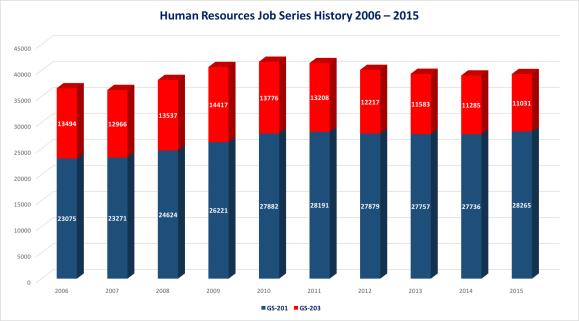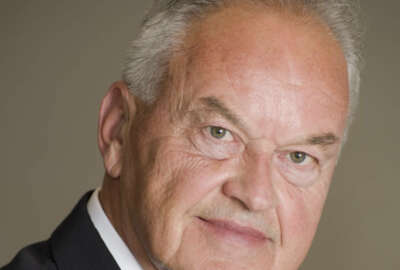
Is federal HR really shrinking?
Jeff Neal is certain there are HR organizations that have suffered reductions, but doesn't think it's accurate to assume that applies everywhere.
This column was originally published on Jeff Neal’s blog, ChiefHRO.com, and was republished here with permission from the author.
I recently wrote a post titled “Federal HR is Mission Critical. Is it Mission Capable.” In it I outlined the reasons why I believe the entire federal HR apparatus, including OPM, hiring managers and operating HR offices, need to be substantially improved. This is the second of this series and will address the issue of shrinking HR offices.
There is no good source that lays out the exact number of HR folks in government, so the best proxy is the number of HR specialists, clerks and assistants. Those folks comprise the bulk of the staff doing HR work, although many HR offices and HR-related organizations have many more employees who are not in an HR job series. It is safe to estimate that these numbers understate the number of HR folks by at least 10 percent, and probably more like twice that.
I was particularly interested in the number of HR positions because I have heard so many people talking about how HR is shrinking everywhere. Even at OPM’s recent event announcing the Hiring Excellence campaign, one participant said, “The HR staffs are shrinking, but the workload is increasing.” I am certain there are HR organizations that have suffered reductions, but it is not accurate to assume that applies everywhere.
Let’s take a look at some data. If we get in our wayback machine and go back 10 years to 2006, we would find 23,075 HR specialists and 13,494 HR clerks and assistants, for a total of 36,569. The numbers have gone up and down a bit over the past 10 years, and now we have 28,265 HR specialists and 11,031 clerks and assistants, for a total of 39,296. Since 2006, the number of HR specialists has increased by 22.5 percent and the number of HR clerks and assistants has decreased by 18.3 percent. The total number of people in the GS-201 and GS-203 job series has increased by 7.5 percent.

If we dig a little deeper, we find that OPM merged the military personnel jobs with civilian HR when the GS-201 classification standard was rewritten in 2000. So let’s take DoD positions in the GS-201 series out of the mix and see what happens. In 2006, there were 10,690 GS-201s in DoD. That left 12,285 non-Defense GS-201 jobs. In 2015, there were 13,267 GS-201 jobs in DoD, leaving 14,998 non-Defense GS-201s. The increase in non-Defense GS-201 positions from 2006 to 2015 is 22 percent —almost exactly the overall increase in the number of GS-201 positions governmentwide.
I discussed my preliminary findings with a colleague who is a former HR director and she pointed out that many of the reductions in HR occurred as a result of the National Performance Review during the Clinton administration. One of the NPR’s big goals was reducing the number of “control” positions like HR and procurement.
More commentary

Civil service reform should be high on the next president's to-do list
I went back to the oldest data available in OPM’s Fedscope (1998) and found the number of HR specialists, adjusting for the changes in the classification standard in 2000, was 21,368. Exact numbers on NPR reductions are hard to come by, but in 1996 the NPR reported that 2,500 HR positions had been eliminated since 1993. If we are very generous and assume all of those jobs were specialists (and assuming a few more reductions between 1996 and 1998), that would put the pre-NPR HR specialists at somewhere around 24,000. Even using that number as a benchmark, the number of HR specialist jobs dipped and then went back up to a number that is greater than the pre-NPR numbers.
It is safe to say that some HR offices are shrinking, but if that is true, it also has to be true that others have grown. The total number of HR specialists has grown substantially in the last decade, while the number of HR clerks and assistants has dropped. Much of the decrease in clerk and assistant jobs can be attributed to increasing automation. No matter how we look at it, the government is spending more money on HR positions than it did in the past. In the spirit of the fact-checking that is common in this election year, I would rate the claim that HR is shrinking as “Mostly False.”
Jeff Neal is a senior vice president for ICF International and founder of the blog, ChiefHRO.com. Before coming to ICF, Neal was the chief human capital officer at the Department of Homeland Security and the chief human resources officer at the Defense Logistics Agency.
Copyright © 2025 Federal News Network. All rights reserved. This website is not intended for users located within the European Economic Area.




